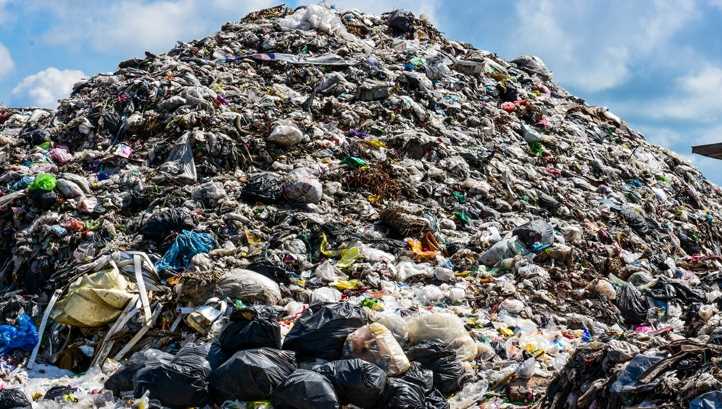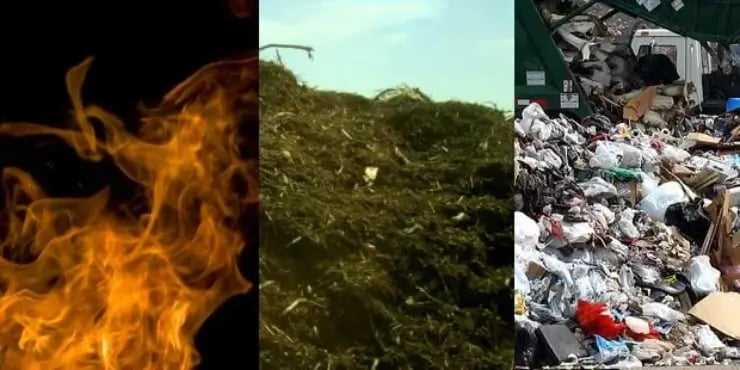
Plastic waste has become a major environmental concern in recent years. With the increasing production and consumption of plastic products, proper disposal methods are crucial to minimize its negative impact on the planet. Two commonly used methods for plastic disposal are burning and burying. While both methods aim to reduce the volume of plastic waste, they differ in terms of their environmental consequences and long-term sustainability.
Burning plastic waste has been a popular method in many countries for years. The process involves the incineration of plastic materials at high temperatures, which converts them into gaseous byproducts and ash. One of the main advantages of burning plastic waste is the significant reduction in volume, making it easier to manage. Additionally, incineration can generate energy by recovering the heat released during the combustion process, which can be used for electricity generation.
However, burning plastic waste also has its drawbacks. The combustion of plastics can release toxic gases, such as dioxins and furans, which are harmful to human health and the environment. These pollutants contribute to air pollution and can have long-lasting effects on ecosystems. Moreover, incineration requires sophisticated waste management facilities and technologies to ensure that the process is carried out safely and efficiently.
In contrast, burying plastic waste in landfills is another widely used method. This method involves the disposal of plastic materials in specially designed areas where they are covered with soil. Burying plastic waste is considered a more cost-effective option compared to burning, as it does not require complex infrastructure. Furthermore, burying can prevent the release of toxic gases, reducing the negative impact on air quality.
However, burying plastic waste also has its disadvantages. Plastic materials take hundreds of years to decompose naturally, contributing to long-term soil pollution and the release of harmful leachate. The leachate can contaminate groundwater and nearby water bodies, posing risks to aquatic life and human health. Additionally, landfills require large areas of land, which may not be sustainable in the long run, considering the growing amount of plastic waste produced globally.
In conclusion, both burning and burying have their pros and cons as plastic disposal methods. While burning can significantly reduce the volume of plastic waste and generate energy, it poses risks to air quality and human health. On the other hand, burying is a cost-effective option that prevents the release of toxic gases but contributes to long-term soil and water pollution. As the world seeks sustainable solutions for plastic waste management, exploring alternative methods such as recycling and biodegradable materials may offer more environmentally friendly options.
- Environmental Impact of Burning Plastic
- Air Pollution
- Climate Change
- Soil and Water Contamination
- Environmental Impact of Burying Plastic
- Health Risks of Burning Plastic
- Health Risks of Burying Plastic
- Efficiency of Burning as a Disposal Method
- Efficiency of Burying as a Disposal Method
- Environmental Impact
- Land Usage
- Q&A
- What are the advantages of burning plastic waste?
- What are the disadvantages of burning plastic waste?
- What are the advantages of burying plastic waste?
- What are the disadvantages of burying plastic waste?
- Which method is more environmentally friendly: burning or burying plastic waste?
Environmental Impact of Burning Plastic
Burning plastic has significant environmental consequences. Here are some of the major impacts:
Air Pollution
Burning plastic releases toxic gases and pollutants into the air. These emissions include dioxins, furans, and other harmful chemicals. Dioxins are known to be highly toxic and can have long-term health effects on humans and wildlife. The smoke emitted from burning plastic can also contribute to smog and worsen air quality.
Climate Change
Burning plastic releases greenhouse gases, such as carbon dioxide and methane, which contribute to global warming. These gases trap heat in the Earth’s atmosphere, leading to a rise in temperatures and altered weather patterns. As plastic production and disposal continue to increase, the contribution of burning plastic to climate change becomes more significant.
Soil and Water Contamination
When plastic is burned, toxic chemicals can contaminate the surrounding soil and water. Ash generated from burning plastic contains hazardous substances that can leach into the soil and groundwater, posing a threat to plant and aquatic life. This contamination can have long-term effects on ecosystems and human health.
Furthermore, the combustion of plastic waste can contribute to the microplastic pollution problem. When plastic is burned, tiny particles called microplastics are released into the environment. These particles can be carried by wind and water, contaminating natural habitats and potentially entering the food chain.
In conclusion, burning plastic as a disposal method has severe environmental impacts, including air pollution, climate change, and soil and water contamination. It is essential to seek alternative, more sustainable methods for plastic disposal to mitigate these negative consequences and protect the environment.
Environmental Impact of Burying Plastic

While burying plastic may seem like a convenient method of disposal, it has significant environmental consequences that should not be overlooked.
One of the major environmental impacts of burying plastic is the leaching of harmful chemicals into the soil and groundwater. Plastic is made from a variety of chemicals, many of which can leach out over time and contaminate the surrounding environment. These chemicals can have detrimental effects on both plants and animals, disrupting ecosystems and posing a threat to human health.
In addition to chemical contamination, burying plastic also contributes to the problem of landfill space. Plastic waste takes hundreds of years to decompose, meaning that buried plastic will remain in landfills for generations to come. This not only takes up valuable space, but it also prevents the land from being used for other purposes.
Burying plastic also has negative impacts on marine life. When plastic waste is not properly disposed of and ends up in waterways, it can make its way to the ocean where it poses a serious threat to marine animals. Sea turtles, birds, and marine mammals can easily mistake plastic for food, leading to ingestion and entanglement. This can result in injury, suffocation, and death for these animals.
Furthermore, burying plastic contributes to greenhouse gas emissions. As buried plastic decomposes, it releases methane, a potent greenhouse gas that contributes to climate change. Methane has a much higher global warming potential than carbon dioxide, exacerbating the effects of climate change.
In conclusion, the environmental impact of burying plastic is significant and far-reaching. From chemical contamination to wildlife harm and greenhouse gas emissions, burying plastic has negative consequences for our planet. It is crucial to consider more sustainable alternatives to plastic disposal in order to mitigate these environmental effects.
Health Risks of Burning Plastic
Burning plastic can result in the release of harmful toxins that have serious health implications. When plastic is burned, it releases a variety of toxic chemicals into the air, including dioxins, furans, and polychlorinated biphenyls (PCBs). These chemicals are known to be carcinogenic and can cause a range of health problems, including respiratory issues, skin irritation, and even cancer.
Inhalation of the fumes produced by burning plastic can lead to respiratory distress and can irritate the eyes, nose, and throat. The toxic chemicals released during the burning process can also contaminate nearby water sources and soil, further impacting both human and environmental health. Additionally, the particles and ash produced during burning can travel long distances, leading to air pollution and affecting the health of individuals far away from the burning site.
Exposure to the aforementioned toxic chemicals can have long-term health effects, even in small quantities. Pregnant women and young children are particularly vulnerable to the harmful effects of burning plastic, as their developing bodies are more sensitive to these toxins. Additionally, repeated exposure to burning plastic fumes can increase the risk of chronic respiratory diseases, such as asthma and chronic obstructive pulmonary disease (COPD).
It is important to note that burning plastic is not only a health risk for individuals directly exposed to the fumes but also contributes to overall environmental pollution. The toxins released during the burning process can accumulate in the environment, affecting ecosystems and wildlife. Therefore, alternative methods of plastic disposal that mitigate these health risks should be considered.
Health Risks of Burying Plastic
Burying plastic waste comes with several significant health risks.
1. Soil and Groundwater Pollution: When plastic is buried in landfills, it can release toxic chemicals and leachates into the soil and groundwater. These chemicals can contaminate drinking water sources and pose a health risk to both humans and animals.
2. Air Pollution: Over time, buried plastic can degrade and release greenhouse gases such as carbon dioxide and methane. These gases contribute to air pollution and climate change, leading to respiratory problems, cardiovascular diseases, and other adverse health effects.
3. Microplastics: Plastic buried in landfills can break down into smaller particles known as microplastics. These tiny plastic fragments can be carried by wind and water, potentially contaminating the air we breathe and the food we eat. Ingestion of microplastics has been linked to various health issues, including inflammation, organ damage, and reproductive problems.
4. Wildlife Health: Burying plastic waste can harm wildlife by entangling or choking them. Animals can mistake plastic fragments for food, leading to ingestion and subsequent health problems. Additionally, the chemicals leached from buried plastic can accumulate in the food chain, posing a threat to ecosystem health and biodiversity.
5. Long-term Effects: Plastic buried in landfills can take hundreds of years to decompose. As plastic degrades, it can release toxins that persist in the environment for extended periods. This long-term exposure to contaminants can have cumulative health effects on both humans and the environment.
Given these health risks, alternative methods of plastic disposal, such as recycling and waste reduction, should be prioritized to minimize the negative impacts of plastic on our health and the environment.
Efficiency of Burning as a Disposal Method
When it comes to the disposal of plastic waste, burning is often considered as an option due to its potential to reduce the volume of waste and minimize its impact on landfills. However, the efficiency of burning as a disposal method is a subject of debate among experts.
One of the main advantages of burning plastic waste is that it can significantly reduce the volume of waste, as the heat generated during the combustion process causes the plastic to melt and eventually vaporize. This helps in reducing the space required for waste disposal.
Furthermore, burning plastic waste can result in the generation of energy if the heat produced during combustion is harnessed. This energy can then be used for various purposes, such as electricity generation or heating. Therefore, burning can be seen as a method that not only disposes of waste but also utilizes it to produce useful energy.
However, it is important to note that burning plastic waste can also have negative consequences. The combustion of plastics releases harmful pollutants and toxic gases into the atmosphere, such as dioxins, furans, and volatile organic compounds (VOCs). These pollutants can have detrimental effects on human health and contribute to air pollution.
Additionally, incomplete burning of plastics can result in the formation of solid residues, commonly known as ash. This ash can contain toxic substances and heavy metals, which can pose environmental risks if not properly managed and disposed of.
Overall, while burning can be an efficient method for reducing the volume of plastic waste and generating energy, it also carries environmental and health risks. It is essential to consider these factors and implement proper measures to minimize the negative impacts associated with burning as a disposal method.
Efficiency of Burying as a Disposal Method
Burying is a commonly used method for disposing of plastic waste. This method involves digging a pit or trench and burying the plastic waste underground. The efficiency of burying as a disposal method can be evaluated based on several factors.
Environmental Impact
One of the key factors to consider when assessing the efficiency of burying as a disposal method is its environmental impact. Burying plastic waste can have negative consequences for the environment, including soil contamination and leaching of harmful chemicals into groundwater. These environmental impacts can persist for a long time, making burying a less efficient method compared to other disposal options.
Land Usage

Burying plastic waste requires a significant amount of land for the burial sites. The availability of suitable land for burying can be a challenge, especially in densely populated areas. Additionally, the land used for burying cannot be used for other purposes, limiting its efficiency as a disposal method.
| Criteria | Efficiency of Burying | Efficiency of Burning |
|---|---|---|
| Environmental impact | High | High |
| Land usage | Inefficient | Efficient |
| Energy generation | None | Possible |
| Cost | Low | High |
Overall, while burying may be a low-cost option for plastic disposal, it is not an efficient method considering its environmental impact and land usage. Alternative methods such as burning may offer more efficient solutions, although they come with their own drawbacks. The choice of disposal method should be made based on a comprehensive assessment of the specific circumstances and goals.
Q&A
What are the advantages of burning plastic waste?
Burning plastic waste can generate energy in the form of heat or electricity. It can also reduce the volume of waste and minimize the need for landfill space.
What are the disadvantages of burning plastic waste?
Burning plastic waste can release harmful pollutants into the air, such as dioxins and furans. It can also contribute to climate change by releasing greenhouse gases.
What are the advantages of burying plastic waste?
Burying plastic waste in landfills can help prevent air pollution and reduce the risk of wildfires. It can also provide a long-term storage solution for waste that cannot be recycled or burned.
What are the disadvantages of burying plastic waste?
Burying plastic waste can take up valuable land space and contribute to soil and water pollution. It can also release greenhouse gases, such as methane, as the waste decomposes.
Which method is more environmentally friendly: burning or burying plastic waste?
Neither burning nor burying plastic waste is considered fully environmentally friendly. Both methods have their advantages and disadvantages, and the most sustainable solution would ideally involve reducing plastic waste at the source and increasing recycling efforts.